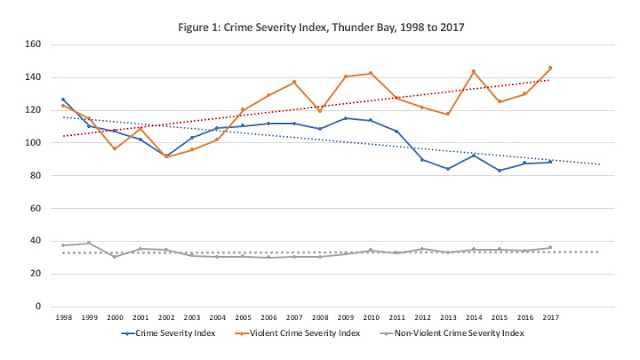After decades of low growth, Thunder Bay has been experiencing a period of growth that affords it an opportunity to reshape its urban landscape. Historically, Thunder Bay has allowed its urban footprint to expand in a low-density highly dispersed web that is more costly to service and provide efficient infrastructure such as water and sewer as well as public transit. The recent spate of population growth as well as the availability of provincial and federal money for housing means that Thunder Bay could be making some major strides building density in its core urban areas. This of course would complement the rather large dollar amounts that have recently been expended for urban redevelopment projects in the downtown cores such as the North Core Streetscape Project and the Victoria Avenue Revitalization.
Alas, in its haste to meet federal and provincial housing targets and obtain government money, Thunder Bay is on the verge of yet again squandering the opportunities that have presented themselves by engaging in short term decision making that will build scattered density developments that will sprout like toadstools after a summer’s rain. City officials have noted that they are only 32 percent of the way in meeting their housing targets and must build an additional 1200 units by February 2027 to meet the target of 1,755 housing units. The proposed locations for density development are at 300 Tokio Street, 144 Fanshaw Street, 791 Arundel Street, 211-223 Tupper Street and 224 Camelot Street.
Of these four proposed locations, three are essentially going to be plonked on available space – often green space – in the midst or immediately adjacent to existing residential areas. Only one – the Camelot Street location is going to be placed near a downtown core area. And that is the point. To date, the large builds on Junot and Fulton have been built in or adjacent to existing lower density residential areas and often at the expense of nearby green space. Except for Camelot – which is a good location if one is planning to build up core area density – these are all scattered willy-nilly in places where the only option is to drive somewhere to get anything done.
Thunder Bay needs to use this opportunity for growth to be more strategic in how it does its housing if it wants to truly build density. The density housing projects in this city should be designed to concentrate population near services and amenities, not encourage more time-consuming commuting in the long run, to meet short term funding targets. The density build locations in Thunder Bay should be the two former downtown cores areas of Port Arthur and Fort William and the corridor connecting them that runs along and immediately adjacent to Water/Fort William Road/Simpson Streets and Algoma/Memorial/May Streets. It is up to the mayor and council to provide this type of directive to its administration because simply asking them to come up with sites for density build will generate the quickest solution rather than a methodical plan for infill.
What might such a density corridor look like? A good example is rooted in the urban renewal studies of the past. Plate 20 of the 1968 Proctor and Redfern Downtown Fort William Urban Renewal envisioned a Simpson Street with density rental housing as the accompanying figure illustrates. Many of those apartments or condos would likely have sweeping views of the lake and provide for a mix of both premium and affordable units with room for shops, stores and offices on the street level. Indeed, the recent redevelopment of Simpson Street's road and sewer infrastructure should have presented an opportunity for the consolidation of derelict and underused properties to build the multi-unit buildings the city seems to so desperate to ram through existing residential neighbourhoods and green space.
This opportunity is going to be short-lived and if we simply build things in an erratic short term pattern, we will have to live with the costs for decades to come. Our municipal politicians need to actually step up and lead for a change by providing direction rather than hide behind bureaucratic processes. This window of opportunity will not last long.

